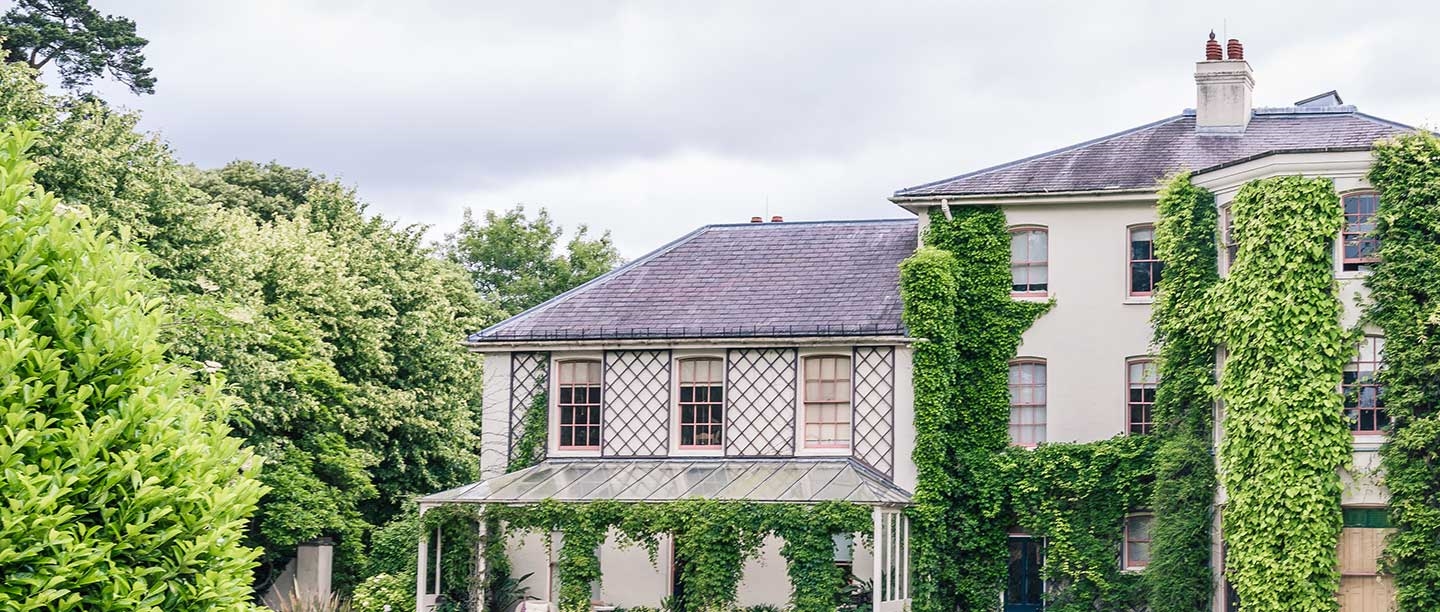The gate and wall remains but the front of the house is now clad in creepers and thoroughly cleaned.
This view of the reverse of the house from the gardens shows how foliage is now grown in a managed way across the house and the famous mulberry tree, visible on the right, is now supported with a prop. Some trees have also been lost due to natural death or storms across the years.
This view, shot from a second floor window of what is now offices, shows how the beds and sundial have been restored to their original historic position. The sundial, by which Darwin would set the clocks of his household, now sits between the flower beds and the veranda where Darwin and his family would sit in wicker chairs.
Gardeners then and now: in both images, a gardener kneels at work in the flowerbeds at the rear of Down House. The 2018 figure is the current head gardener at Down House. The tree on the right hand side of the images (supported by a frame in 2018) is the mulberry tree which survives from Darwin's day, which still produces fruit each summer.
The greenhouse and hothouse have been restored, repainted and richly planted. Darwin added a hothouse in the 1860s so he could experiment on warm-climate plants, and these are stocked today with many of the same plant specimens that Darwin cultivated including orchids, carnivorous plants, wild cucumber and passionflower.
These outbuildings within the grounds were, as can be seen, in poor repair by the mid-1990s. The intervening years have seen them carefully repaired and reconstructed, including new roofing and smart blue paint.
Changes made to Darwin's gardens over the decades include the restoration of his ‘thinking path’, the Sandwalk, where he strolled and contemplated and, beyond the Sandwalk, this meadow behind the house.
